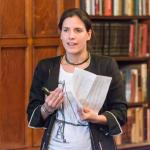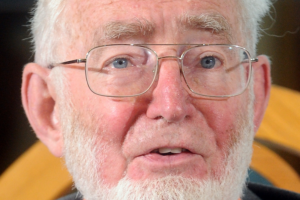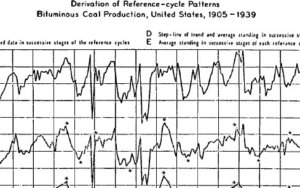Applied economics was opposed to “pure” (Walras, Pareto) or “theoretic” (Senior) economics and to “normative” or “social” economics (Walras), usually to point to the primacy and independence of the pure side. Applied was often equated with ‘practical, but also with ‘real,’ ‘specific’ or ‘detailed.’ Today, Backhouse and Biddle added, the pattern is to define applied economics as the application of a “core,” usually comprised of some micro and (but less and less) macro theories to a myriad of recently institutionalized “fields.” The notion of some fundamental theory supporting a variety of application can already be seen, they argued, in Samuelson, Wald or Von Neumann and Morgenstern. Application would today consists in “reducing the degree of abstraction of this core theory in order to throw light on specific problems and situations,” by adding more specific labels to variables, additional structure, numerical parameters, or else. Yet, they noted, applied economics also refers to policy formation or evaluation, a trend already highlighted by JN Keynes then Joseph Schumpeter. The authors also wondered whether the rise of microfoundational issues in macroeconomics transformed what was initially conceived as a core field into an applied one, and how many separate research areas gradually became applications of standart microeconomic theory
The papers Backhouse and Biddle gathered in their volume investigated how the meaning and boundaries of applied econ have evolved, been challenged and negociated. No linear one-way relationship from core to applied is to be found in the historical records. Leonard’s paper on the minimum wage controversy suggested that Card and Krueger’s findings encountered resistance among labor economists because they challenged the core. Goldfarb and Stekler outlined a two way relation between the theory of rational expectations and the applied field of macroeconomic forecasting. Dimand’s account of applied game theory showed that applied economics can be understood without any reference to empirical work or application to real-world situations. Klein used the history of statistical quality control to show how clients’ demand that economists solve practical problems led to advances in ‘core’ statistical decision theory. Comin’s focus on the department of Applied Economics (DAE) at Cambridge brought to the fore alternative interpretations of what “applied” meant in the postwar, from Richard Stone’s focus on empirical work to Reddaway’s leaning toward a policy-oriented aproach. Backhouse and Biddle finally suggested new directions for a history of applied economics, including the relations between economists working in government and business and economists in academia, the proliferation of institutionalized applied fields from the middle of the twentieth century, and the impact of economists and economic research on the actual crafting of policy
It’s now thirteen years later, and few of these questions have been answered. As for direct investigation, most applied fields are still crying for broad narratives: how development economics evolved from a separate field to standard applied microeconomics, if so? Which transformations labor economics underwent in the sixties to eighties? What’s the history or prehistory of the much debated and loosely defined area of policy evaluation? What about health, urban, demography, public, industrial,or international economics? On the contrary, there has been a huge deal of work on economists as public intellectuals, policy makers and advisors, and on economics as practiced outside academia (a small sample includes courts, the Bureau of Labor Statistics, UNESCO, Central Banks, the pharmaceutical business, and a deal of other extra-academic sites, as seen in a recent volume on the history of observation in economics). In these however, the rise and transformations of applied economics have somewhat been ecplised by other themes. Economics as modeling (which Mary Morgan defines as‘fitting theories to the world,’ ‘theorizing’ or ‘investigating’), economics as engineering, mesurement and observation, or the focus on economic practices. But these are all tied up with the changing image of economics as an applied science. For instance, Maas, Mata and Davis’s claim that historians should consider economics-as-practice in addition to the traditional economics-in-practice view is constructed against the traditional idea that theory and application are to be treated as separate activities. Still, the undefined notion of “application” keep surfacing in the collection of papers they introduce, as in most accounts of postwar economics.
This shadowy presence reveals the difficult definition and delimitation of applied economics. The application of what (a core, some theory, abstract notions, tools)? To what? As opposed to what? Applied as practical, real, specific, detailed, concrete, empirical, policy-oriented? Published and archival records of economists’ discussions suggest that at least three competing definitions of “applied work” were in use in the early fifties: applied as the use of concepts, theories or tools to analyse (and solve) a specific real-world issue, applied as empirical, and applied as suitable for policy prescription. How did these definitions emerge? One hypothesis is that each was nurtured within a different institutional setting. The first one prevailed in those sites where research was funded by the military or engineering-minded clients, and was embodied in the problem-solving urgency zeitgeist of the Second World War. The second was pervasive in those public or private bodies geared toward the production of statistics. Finally, both private foundations such as Ford, Carnegie and Rockefeller and governmental agencies wanted research fit for social engineering and policy rationalization (of course, these three definitions, although ideally separated, where actually entangled in economists practices and patrons’ demands). Among economists, worries about the lack of support of theoretical work was voiced. Whether empirical research should be driven by theoretical models (Cowles) or by a careful descriptive analysis of data (NBER business cycles research), whether ‘good fundamental theory’ could emerge out of ‘practical questions’ (Herbert Simon’s words) was challenged. And that the wealthiest postwar patrons’ bias toward policy might endanger academic freedom was on every mind.
What happened then? Did these definitions of what counts as applied merge? Were they superseded by the “core-applied” framework after the stablization of the so-called (general equilibrium?) “core”? Do these alternative definitions still coexist today? One possibility is that these various definitions of applied economics became entrenched in different places. This would explain why Chicago and MIT economics seem so different (in their hypotheses and conclusions) and so similar at the same time. “Small models applied to real problems, blending real-world observation and a little mathematics to cut through to the core of an issue”: Krugman’s depiction of the MIT style of doing economics could be used to characterize Friedman’s research method. “His interest in certain applied problems…will contribute to the atmosphere of rigor-with-policy relevance that we have been trying to maintain”: this 1966 charaterization of Diamond by Solow would apply to several Chicago economists as well. Both communities were deeply involved in applied economics, yet their respective understanding of what to apply anf for what purpose was very different. As will be extensively discussed at a HOPE conference next week, the engineering tradition of designing small tractable models to make sense of the world, to solve specific issues and possibly, to fix things, was at the core of MIT economics. MIT applied economics was thus also related to policy, although the connection was only publicly acknowledged in the sixties, after two decades of craft refinement, and the technical side of policy engineering was constantly emphasized. Chicago exhibited a more complex combination of applied traditions. The most apparent was the strong policy aspect, the quick and systematic translation of research, whether dealing with macro, industrial, development, urban or agricultural economics, into policy prescriptions, law drafts etc. However, empirical research also sits at the core of Chicago research and training. In the late forties and early fifties, it was the site of controversies between the Cowles view of a theoretically-driven econometrics, and the idea that empirical work begins with the careful collection and analysis of data NBER researchers such as Mitchell had developed (Friedman, Stigler, Becker and many other were associated with the NBER). The clash is evident not only in the 1949 “measurement without theory” dispute, but ran throughout the sixties in the macroeconomic debates between Friedman, Modigliani, Tobin.
Before Cowles economists left to Yale in 1955, they had trained, in association with NBER minded Chicago economists, a new generation of empirical economists led by Zvi Griliches. The latter defined themselves as applied economists proper and borrowed as much from Roy Radner, Carl Christ and Haavelmo’s lectures in econometrics as from Ted Schultz and Gale Johnson’s agricultural and development economics where they believed the “frontier of applied economics” was to be found in the fifties, and Harberger’s public finance workshop, where new ways of applying the basic toolbox taught at Chicago were discussed by Griliches, Chow, Telser. This generation is yet missing from Chicago narratives, just as applied economics only appear at the background of the emerging history of MIT economics. It’s time to give sustained and coordinated attention to the history of applied economics again.






